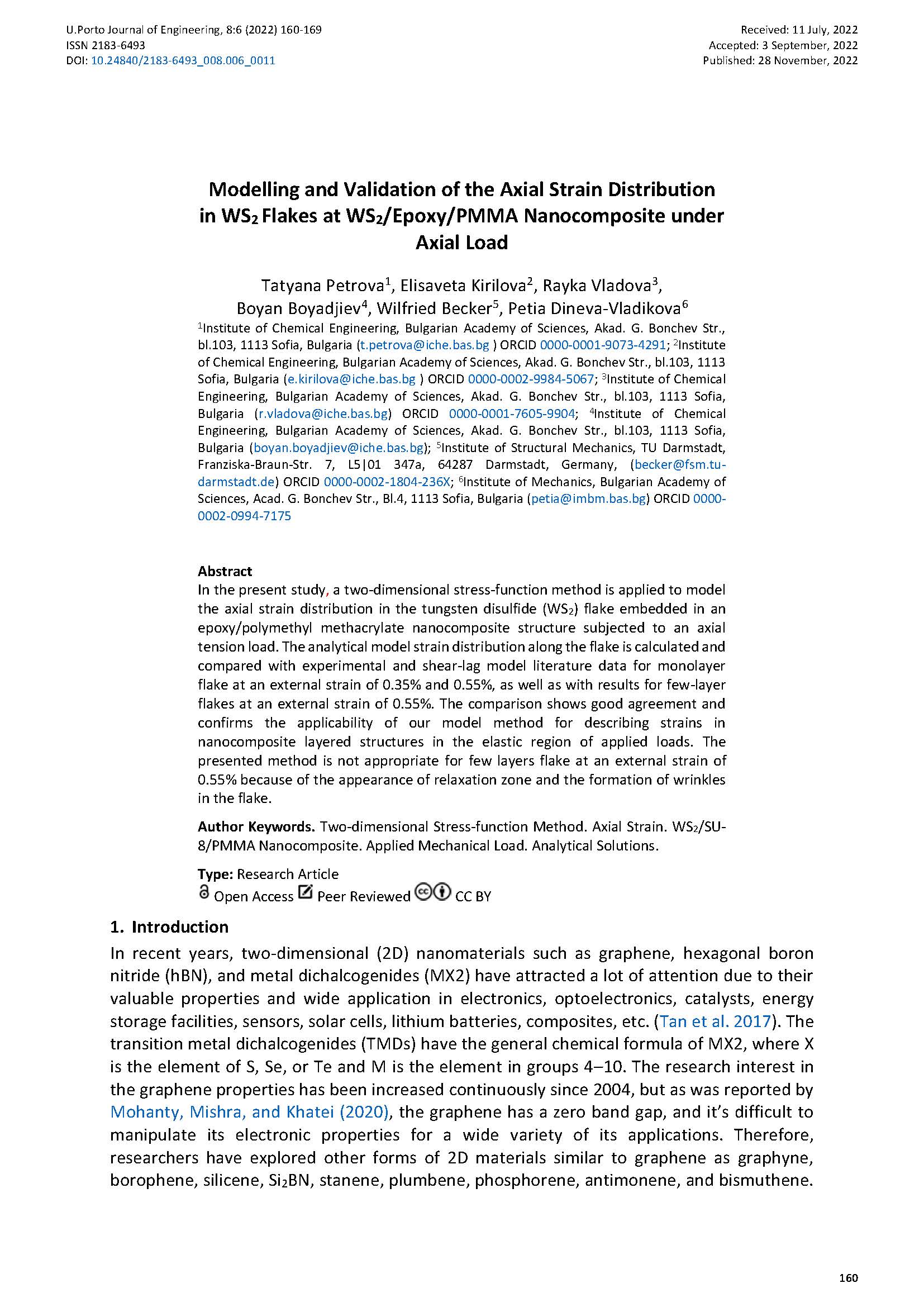Modelling and Validation of the Axial Strain Distribution in WS2 Flakes at WS2/Epoxy/PMMA Nanocomposite under Axial Load
Main Article Content
Abstract
In the present study, a two-dimensional stress-function method is applied to model the axial strain distribution in the tungsten disulfide (WS2) flake embedded in an epoxy/polymethyl methacrylate nanocomposite structure subjected to an axial tension load. The analytical model strain distribution along the flake is calculated and compared with experimental and shear-lag model literature data for monolayer flake at an external strain of 0.35% and 0.55%, as well as with results for few-layer flakes at an external strain of 0.55%. The comparison shows good agreement and confirms the applicability of our model method for describing strains in nanocomposite layered structures in the elastic region of applied loads. The presented method is not appropriate for few layers flake at an external strain of 0.55% because of the appearance of relaxation zone and the formation of wrinkles in the flake.
Downloads
Article Details

This work is licensed under a Creative Commons Attribution 4.0 International License.
Authors who publish with this journal agree to the following terms:
- Authors retain copyright and grant the journal right of first publication with the work simultaneously licensed under a Creative Commons Attribution License that allows others to share the work with an acknowledgement of the work's authorship and initial publication in this journal.
- Authors grant the journal the rights to provide the article in all forms and media so the article can be used on the latest technology even after publication and ensure its long-term preservation.
- Authors are able to enter into separate, additional contractual arrangements for the non-exclusive distribution of the journal's published version of the work (e.g., post it to an institutional repository or publish it in a book), with an acknowledgement of its initial publication in this journal.
- Authors are permitted and encouraged to post their work online (e.g., in institutional repositories or on their website) prior to and during the submission process, as it can lead to productive exchanges, as well as earlier and greater citation of published work (See The Effect of Open Access).

